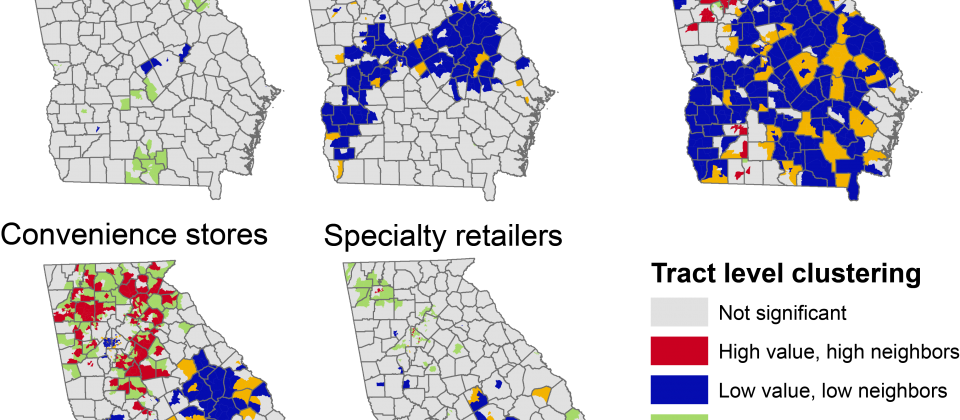Jerry Shannon, University of Georgia
The Supplemental Nutrition Assistance Program (SNAP, formerly known as food stamps) has long been touted for its effects as a Keynesian stimulus. With roots in the Great Depression, the program provides countercyclical spending that supports a range of actors across the food system. At the same time, SNAP also provides income support to low income households, leading to measurable reductions in food insecurity. While SNAP’s economic and social benefits are both often cited, little research has been done on how the stimulus provided by SNAP affects food environments at the local level. By providing funding to local food retailers through the mechanism of the market and consumer choice, SNAP benefits provide a key revenue stream for stores in low income areas. For those concerned with the accessibility of healthy foods and the impact of food deserts, SNAP may play an important and potentially overlooked role.
This project examines the impact of SNAP on local food environments over the course of the Great Recession, when enrollment in the program swelled to over 45 million individuals. While SNAP does play a significant role in preserving existing stores and opening new ones, small convenience stores–home to nutritionally poor foods and often seen as contributing to high crime rates–benefited more than any other retailers from this effect. In many areas, increases in non-white populations dampened SNAP’s effect at opening new supermarkets. Lastly, alternative food systems saw little benefit from this increase in SNAP funding. These results question the unequivocally positive characterization of SNAP’s stimulus, particularly as it operates through market based mechanisms, and suggest a need for reimagining how state action to address hunger might more effectively promote health and equity throughout the food system.


Leave a Reply